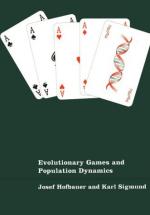|
This section contains 2,170 words (approx. 8 pages at 300 words per page) |

|
A population describes a group of individuals of the same species occupying a specific area at a specific time. Some characteristics of populations that are of interest to biologists include the population density, the birthrate, and the death rate. If there is immigration into the population, or emigration out of it, then the immigration rate and emigration rate are also of interest. Together, these population parameters, or characteristics, describe how the population density changes over time. The ways in which population densities fluctuate—increasing, decreasing, or both over time—is the subject of population dynamics.
Population density measures the number of individuals per unit area, for example, the number of deer per square kilometer. Although this is straightforward in theory, determining population densities for many species can be challenging in practice.
Measuring Population Density
One way to measure population density is simply to count all the...
|
This section contains 2,170 words (approx. 8 pages at 300 words per page) |

|


